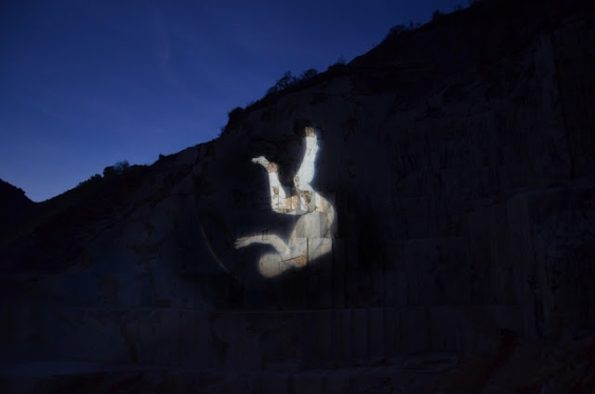Search
To search for an exact match, type the word or phrase you want in quotation marks.
A*DESK has been offering since 2002 contents about criticism and contemporary art. A*DESK has become consolidated thanks to all those who have believed in the project, all those who have followed us, debating, participating and collaborating. Many people have collaborated with A*DESK, and continue to do so. Their efforts, knowledge and belief in the project are what make it grow internationally. At A*DESK we have also generated work for over one hundred professionals in culture, from small collaborations with reviews and classes, to more prolonged and intense collaborations.
At A*DESK we believe in the need for free and universal access to culture and knowledge. We want to carry on being independent, remaining open to more ideas and opinions. If you believe in A*DESK, we need your backing to be able to continue. You can now participate in the project by supporting it. You can choose how much you want to contribute to the project.
You can decide how much you want to bring to the project.

During the interventions that took place on 24 April in the historic Colonnata quarries, various large scale images of “falls” were projected during the night, illuminating parts of the Apuan Alps. These images, curated by Federica Forti, projecting the actual moment of the fall, (prior to the inevitable wound, the potential damage, encapsulated and projected on stone) were visible from far away: from the accessing streets, the motorway and nearby towns. They were a reminder of the impact that precedes our inevitable fall; definitively dissolving the landscape, it was necessary to blast the mountain into smithereens to use it not so much as a genre of representation, but to question it as a medium with which to achieve a personal end.” (S. Morilla, March 2013).
In times like these when everything seems to be collapsing the representation of “the fall” in a huge scale confronts us directly with a conflict or what should be understood as a mutable space where art, as it always ought to be, questions truth, reality and the world. Morilla for years now has been escaping the white cube of the gallery to propose other readings of art, of the activity of the artist and above all, about how to understand the act of living. The particular perspective of the life of the artist is usually protean and honest like his work, in this case the monumental scale of the work, extends bridges and recreates a particular imaginary that highlights his obsessions. The majority of Morilla’s interventions are ‘site specific’ projects, works that aside from requiring a complex elaboration, are often hard to see.
This strange and uncomfortable location of the spectator’s position is the incentive, making the artist’s pieces at times almost invisible, camouflaged on roof terraces, erased by the tide or made with live animals such as lambs. If this year he made a project called “Por donde habéis venido” (Where have you come from) in which he made some larger drawings than we have ever seen with a tractor, four years ago he made a piece in the Academy in Rome where he literally covered the roof with an intervention that was around 50 square metres, in which the myth of Icarus turned bloody. Santiago Morilla has continuously questioned the limits of the landscape as much as the limits of drawing neither of which are simple or superficial subjects. The epidermis of painting is transformed into “something else” in the work of Morilla, the falls of both individuals and groups leading us directly to failure, loss and above all to rack and ruin. The place chosen to carry out these spaces with accidents are none other than a strange place called Carrara, the quarries and the marble museum. A very particular city, where decadence intermingles with opulence and the material itself lends a gravitas to the history of life. The perfect place to locate Santiago Morilla’s work. The origin and the end
Castro Flórez highlighted the artist’s capacity for drawing “Morilla draws and amplifies figures and stories, he goes beyond the current rhetoric of a certain sort of “cartoon” finding his own, enormously fruitful path. His works are as much ‘site specific’ as they are designed for google-globalisation. In the end there isn’t a privileged point of view so much as approaches and stances, focalisations and dislocated processes, ways of being with an immense drawing or at a distance, contemplating something extraordinary in a computer. It’s about compelling us to think (aesthetically) about outside, in an endeavour to understand our landscape even thought it is based on a cartography that is nothing more than than a few figures floating high above in the exhibition space”.
And that is Morilla’s intention, to give new meanings to these centres of power that need new iconographic -faceless- translations for their temples. This project, within the cycle Database Carrara, proposes the creation and production of pediments and low-reliefs in marble that follow the rhythms and composition of the stock-exchange rates of the principal industrial and banking monopolies, that ultimately in imperialist countries exercise economic, political and aesthetic control. So the representation of the fall becomes a symbol of this time. Quite a challenge for decadent and beautiful Carrara. Almost, like art itself.

Avelino Sala is an artist, curator and publisher. Since 2012 manages the Studio Avelino Sala space in Gracia. He lives and works in Barcelona. His work as an artist has led him to question reality with a critical look at a continuous exploring the social and political imaginary and try to stick his finger in the sore to see if art can be a generator of new spaces and experimentation capable of re -create other realities.
"A desk is a dangerous place from which to watch the world" (John Le Carré)